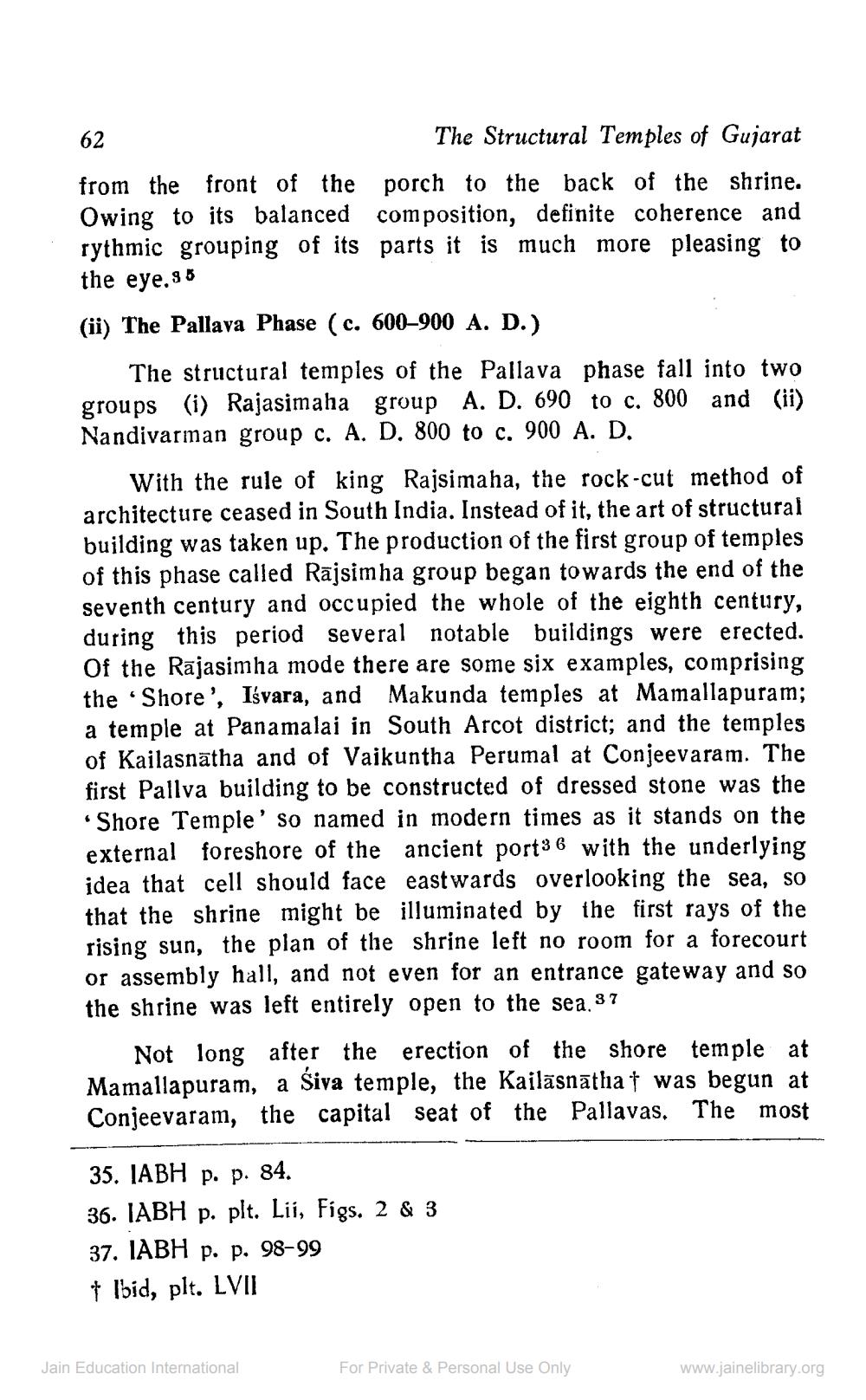________________
62
The Structural Temples of Gujarat from the front of the porch to the back of the shrine. Owing to its balanced composition, definite coherence and rythmic grouping of its parts it is much more pleasing to the eye.36 (ii) The Pallava Phase (c. 600900 A. D.)
The structural temples of the Pallava phase fall into two groups (i) Rajasimaha group A. D. 690 to c. 800 and (ii) Nandivarman group c. A. D. 800 to c. 900 A. D.
With the rule of king Rajsimaha, the rock-cut method of architecture ceased in South India. Instead of it, the art of structural building was taken up. The production of the first group of temples of this phase called Rājsimha group began towards the end of the seventh century and occupied the whole of the eighth century, during this period several notable buildings were erected. Of the Rājasimha mode there are some six examples, comprising the Shore', Isvara, and Makunda temples at Mamallapuram; a temple at Panamalai in South Arcot district; and the temples of Kailasnātha and of Vaikuntha Perumal at Conjeevaram. The first Pallva building to be constructed of dressed stone was the • Shore Temple' so named in modern times as it stands on the external foreshore of the ancient port36 with the underlying idea that cell should face eastwards overlooking the sea, so that the shrine might be illuminated by the first rays of the rising sun, the plan of the shrine left no room for a forecourt or assembly hall, and not even for an entrance gateway and so the shrine was left entirely open to the sea. 37
Not long after the erection of the shore temple at Mamallapuram, a Siva temple, the Kailāsnāthat was begun at Conjeevaram, the capital seat of the Pallavas. The most
35. JABH p. p. 84. 36. IABH p. plt. Lii, Figs. 2 & 3 37. IABH p. p. 98-99 † lbid, plt. LVII
Jain Education International
For Private & Personal Use Only
www.jainelibrary.org




